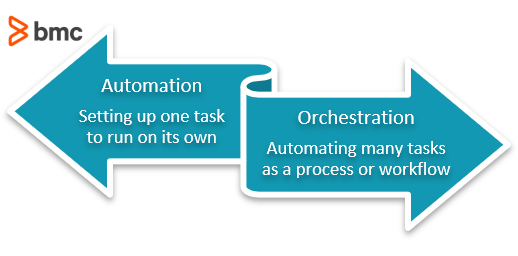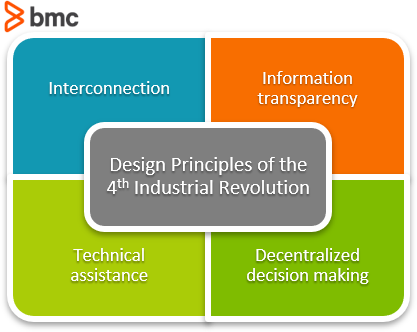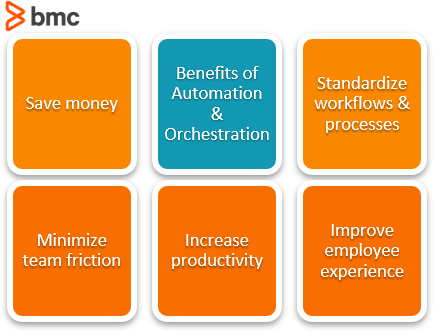Automation is by no means a new concept, but it is getting a lot of attention these days. Let’s take a look at the practical application of automation within the workplace.
What is workplace automation?
Workplace automation is the process of creating systems that complete a given task with minimal (or no) direct involvement from humans.
A technical distinction: automating many tasks as part of a process or workflow becomes orchestration.

History of automation
Automation isn’t new. In many ways, workplace automation began during the time of the Industrial Revolution. Then, the advent of assembly lines sought to reduce the skills and knowledge each worker would need in order to create the end product.
The assembly line setup made it so workers could quickly train to accomplish a small set of tasks that made up one small portion of the entire manufacturing process for any given product. The go-to example is automobiles. (Oldsmobile actually used the assembly line for automobile first, before Henry Ford and the Model T of the 1910s truly revolutionized the concept.) This made it possible to:
- Ramp up production speeds
- Drastically reduce the cost of finding new workers
Of course, you could argue that this doesn’t fit our definition of workplace automation. It doesn’t reduce direct human involvement; it just spreads that involvement out among more workers. However, the assembly line approach paved the way for what is possibly the first true form of automation: conveyor belts.
Conveyor belts directly reduced human involvement. We humans no longer had to carry the product from one stage of production to the next. As time pressed onward, human workers would progressively have work offloaded from them through the creation of advanced robotics that could perform tasks previously accomplished by the human workers.
Today, we’re in the fourth industrial revolution. Workplace automation primarily takes the form of software automation through the application of modern technologies like:

Modern workplace automation
It’s safe to say that practically everyone living in the digital age has directly experienced workplace automation at some time—if you’re reading this, you likely have, too. Here are some common applications of workplace automation.
Predictive writing
Some of the most commonly used forms of workplace automation are autocomplete or spellcheck functions. You’ve probably sent a few texts or emails with oddly placed words, usually added by autocomplete or autocorrect software. But this workplace automation goes further than fixing typos.
Autocomplete or autofill in programs like Excel helps workers increase data entry speeds and accuracy. These features also saving us from having to type in every last detail thanks to auto-prompted options for completing data as you start to type or click on a spreadsheet cell.
However, autocomplete functions aren’t limited to basic suggestions and data entry tasks.
Features like Gmail’s Smart Compose provide suggestions for completing entire emails, using predictive writing suggestions based on previous emails you’ve sent. This type of automation leverages AI to provide writing suggestions tailored to your style of writing by learning how you write over time—allowing it to get better the more you use it.
AI-powered writing suggestions can save a lot of time. According to a Canadian study, business professionals spend an average of 17 hours each week reading, responding to, and sending work emails.
Customer support
Calling just about any company’s customer support line will almost certainly mean an automated support system. While automated customer service experiences get a bad rap, there are organizations out there leveraging the power of AI to create more seamless and easier-to-use self-service systems.
Interactive voice response (IVR) systems are trying to take things much further than the typical menu-based decision trees that we’re all too familiar with. The Zendesk Customer Experience Trends Report 2020 anticipates that 20% of all customer service requests will be handled by AI-powered IVR systems by 2022.
Customer support automation through these AI systems is even getting to the point where callers are auto-matched with specific customer service reps best equipped to help them. This might be based on the caller and/or the agent:
- The problem at hand
- Previous interactions and behavior
- Even personality type
Agile software development
Companies that develop and support various types of software and apps can use automation to make work easier on their developers. Automation can reduce human error and free up developers to focus on features and improvements that can get to market faster.
Digital transformation
As most companies pursue digital transformation to become truly modern, agile places of work, automation is a main driver. Companies seeking true digital transformation likely want to become more flexible, increase innovation, and improve output quality—all to increase customer satisfaction.
With automation in place across customer service, software development, and even infrastructure and operations (I&O) activities, you have a good chance of making you digital transformation succeed.
Ultimately, these systems all aim to increase customer satisfaction. Automation like this also offloads otherwise tedious work from human agents—freeing them up to tackle more complex issues that (for now) still require a human touch.

Workplace automation benefits
Though automation might seem out of reach, these key benefits will help you get executive buy-in.
Cost savings
The most obvious benefit of workplace automation is cost savings. Running and maintaining a single system that automatically handles tasks is likely a much better ROI than needing multiple workers to accomplish the same task.
Standardizing workflows for productivity
Standardizing your products and your processes means both are more reliable. Soon, your company’s reputation will reflect this reliability, too.
Increased employee satisfaction
Automation isn’t just good for the company, it can be a huge boon for the workers, too. Modern automation is only really good for performing repetitive tasks that don’t involve much nuance or require critical thinking.
The first tasks that get automated are most often the tasks that are most tedious and require the most time investment from human workers. Automating these tasks frees up human workers to take on more mentally demanding tasks that require the application of creativity and ingenuity.
Leveraging workplace automation can help save money in the long run while also improving the overall quality of life of the human workforce. This win-win scenario is a tough deal for organizations to pass up and is why we have seen a huge surge in automation over the past few decades.
Can everything be automated?
All this doesn’t mean organizations should automate anything that can be automated. Some tasks may cost more to automate than the money you’d save in the long run. Furthermore, not every organization has the capital necessary to invest in automating tasks when they might not see a return on that investment for many years to come.
The capabilities of modern automation technology is nothing short of incredible, with more innovation guaranteed. Investing in automation is quickly becoming a necessity for businesses in every sector as the technology becomes more advanced and more affordable with every passing year. Applications and methodologies for advanced AI systems continue to improve as more people turn to automation to complete mundane tasks.







